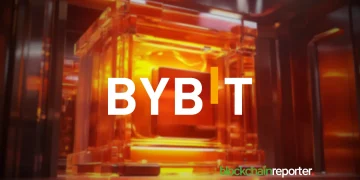In the constantly evolving landscape of cryptocurrency, privacy and scalability have become crucial aspects. One protocol that addresses both of these concerns is Mimblewimble. But what exactly is Mimblewimble, and how does it work? This article delves into the intricacies of this innovative blockchain technology.
Understanding Mimblewimble
Mimblewimble is a blockchain protocol designed to enhance privacy and scalability in cryptocurrency transactions. Named after a spell from the Harry Potter series, it aims to create a more private and efficient way of conducting transactions on the blockchain.
The Origins of Mimblewimble
The concept of Mimblewimble was introduced by an anonymous developer under the pseudonym “Tom Elvis Jedusor” in 2016. The whitepaper outlined a novel approach to blockchain design, emphasizing privacy and reduced data size.
How Mimblewimble Enhances Privacy
Mimblewimble enhances privacy through its unique transaction structure. Unlike traditional blockchain protocols that expose transaction details publicly, Mimblewimble obscures the data, making it difficult to trace transactions back to individual users.
- Confidential Transactions: Mimblewimble uses a cryptographic technique called Confidential Transactions (CTs), which hides the amounts being transferred.
- CoinJoin Mechanism: This combines multiple transactions into a single one, making it hard to determine which inputs correspond to which outputs.
- Cut-Through: This feature further reduces the size of the blockchain by removing spent outputs, streamlining the transaction data stored.
Scalability Improvements with Mimblewimble
In addition to enhancing privacy, Mimblewimble addresses scalability issues that plague many blockchain networks. The protocol’s structure allows for more compact blockchain data, which can lead to faster and more efficient transaction processing.
- Reduced Blockchain Size: By eliminating unnecessary transaction data, Mimblewimble significantly decreases the blockchain size, making it easier to manage and store.
- Efficient Validation: The protocol allows for faster validation of transactions since it focuses on the net transaction result rather than individual transaction histories.
Advantages of Mimblewimble
- Enhanced Privacy:
- Confidential Transactions: Mimblewimble uses Confidential Transactions (CTs) to hide the amounts being transferred, ensuring that transaction details remain private.
- CoinJoin Mechanism: By combining multiple transactions into one, it makes it difficult to trace the origin and destination of funds, enhancing user anonymity.
- Improved Scalability:
- Reduced Blockchain Size: Mimblewimble’s cut-through feature eliminates unnecessary transaction data, significantly reducing the size of the blockchain and making it more manageable.
- Efficient Validation: The protocol focuses on the net transaction result rather than individual transaction histories, allowing for faster and more efficient transaction validation.
- Simplified Transaction Structure:
- Compact Data: The streamlined data structure not only improves scalability but also reduces storage requirements for nodes.
Disadvantages/Limitations of Mimblewimble
- Complexity in Implementation:
- Technical Challenges: Implementing Mimblewimble can be complex due to its unique transaction structuring and cryptographic techniques, requiring advanced technical expertise.
- Lack of Full Script Support:
- Limited Smart Contracts: Unlike some other blockchain protocols, Mimblewimble does not support complex scripting capabilities, which limits its use for smart contracts and decentralized applications (DApps).
- Reduced Transparency:
- Regulatory Concerns: The high level of privacy can raise concerns among regulators and law enforcement agencies, as it makes tracking illicit activities more challenging.
- User Trust: Some users may be wary of the lack of transparency, as it can potentially hide fraudulent activities or malicious behavior.
- Smaller Ecosystem:
- Adoption Rate: Compared to more established blockchains like Bitcoin and Ethereum, Mimblewimble has a smaller ecosystem, which may affect its adoption and integration with other platforms and services.
Mimblewimble in Action: Popular Implementations
Several cryptocurrencies have implemented Mimblewimble to take advantage of its privacy and scalability features. Some notable examples include:
- Grin: Launched in January 2019, Grin is an open-source project that uses Mimblewimble to offer privacy-preserving transactions without sacrificing scalability.
- Beam: Another cryptocurrency leveraging Mimblewimble, Beam focuses on providing confidential and scalable transactions for users and businesses.
Wrap Up
Mimblewimble represents a significant advancement in blockchain technology, offering enhanced privacy and improved scalability. Its unique approach to transaction structuring and data management makes it a promising solution for the future of cryptocurrency. As more projects adopt Mimblewimble, its impact on the crypto landscape is likely to grow, paving the way for more secure and efficient digital transactions.























